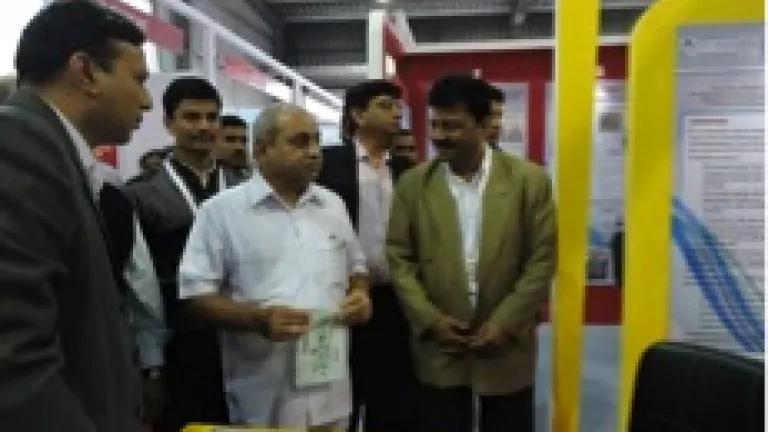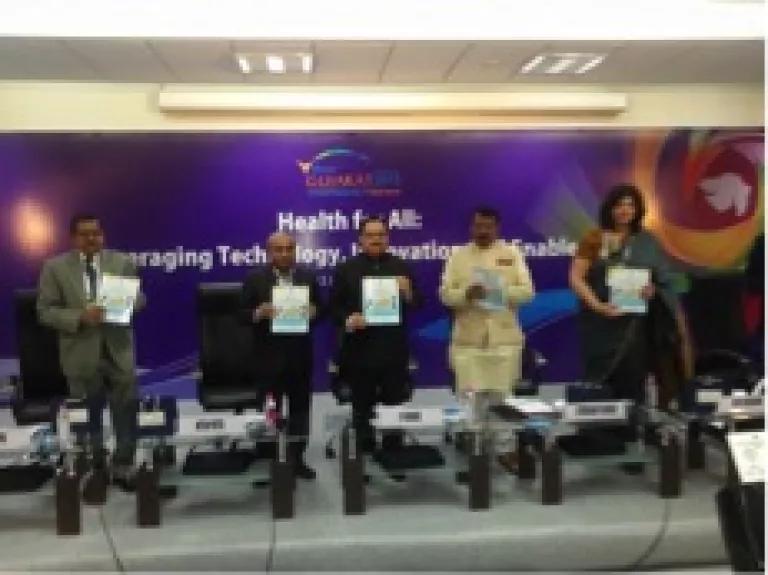Sharing Lessons on Building Climate Resilience in India from Ahmedabad's Heat Action Plan

Guest Blog by Priya Dutta, Ajit Rajiva & ABhiyant Tiwari of the Indian Institute of Public Health, Gandhinagar
The Vibrant Gujarat Summit- Gujarat's annual symposium to encourage development efforts and partnerships between local and international parties - is an effective opportunity for knowledge sharing on both the business and the social front. This year, the activities of the Summit, which took place from January 11th to 13th at Mahatma Mandir, Gandhinagar, Gujarat, aimed to bring policymakers, academia, business leaders, and investors together on the same platform. Sessions encouraged networking, exchange of ideas, and investments in various development sectors in India. The United Nations Secretary-General Ban Ki-Moon, World Bank President Jim Yong Kim, and U.S. Secretary of State John Kerry were among the many leaders that attended the summit. Diplomats, CEOs, and delegates from over 120 countries as well as many top-level decision-makers of both local and international governments were represented, making the events truly global.
The Indian Institute of Public Health, Gandhinagar (IIPH-G) and NRDC jointly showcased the Ahmedabad Heat Action Plan - a project that is the outcome of a Vibrant Gujarat MOU with the state of Gujarat and City of Ahmedabad. Plans are now underway to unveil the 2015 Heat Action Plan, which will incorporate the many lessons learned from stakeholders' experiences in 2014 and feedback, as well as data collected at the grassroots level.
IIPH-G representative explaining about Ahmedabad Heat Action Plan Poster to Gujarat State Cabinet Health Minister at Vibrant Gujarat. © IIPH-G
Ahmedabad's efforts in heat-related disaster preparedness were initiated, in part, by the deadly heat wave of May 2010. Temperatures rose to over 46°C, causing a noticeable spike in illness and death. The plan was first implemented in 2013, becoming the first comprehensive early warning system and preparedness plan for extreme heat weather events in South Asia. The Plan describes agency and community actions to increase preparedness, information-sharing, and response coordination to protect vulnerable populations from extreme heat.
With India poised to promote international partnerships at grand summits like the Vibrant Gujarat Summit in various areas such as infrastructure, education, and healthcare services, the Ahmedabad Heat Action Plan is a replicable and low-cost strategy that can help cities across the world build resilience against global rising temperatures. This year, the Heat Action Plan was also lauded as Gujarat's most successful project in the "Health for All - Leveraging Technology, Innovation and Enablers" session - an exclusive pavilion for healthcare exhibitors. Further, the Vibrant Gujarat MOU under which the Heat Action Plan was developed was acknowledged as one of the most effective out of the 176 signings that occurred in the 2011 summit.

Book released by the Indian Cabinet Health Minister during Vibrant Gujarat. © IIPH-G
In another region of India, the success story of 2014 Heat Action Plan was selected for presentation at the National Conference on Occupational Health held in Puducherry in late January. This conference brought together international and national experts, occupational health and safety professionals, and researchers in the areas of workplace health, occupational safety, industrial hygiene, organizational and occupational and health psychology, employee assistance, human resources and related disciplines.
The Ahmedabad Heat Action Plan analysis paper was presented by Dr. Priya Dutta of IIPH-G who highlighted the impacts of heat waves on mortality and morbidity after two years of the Plan's implementation, thereby evaluating the success of warnings, interventions, and awareness building associated with extreme heat exposure and protection of the city's most vulnerable residents.
Based on the lessons learned from Ahmedabad's Heat Action Plan, there are plans to expand the project's impact by collaborating with leading cities and states in India to tailor and implement their own early warning systems and heat preparedness plans. Another step is engaging the central Indian government to start the process of mainstreaming heat wave planning at the state and national levels and support disaster risk reduction plans that increase communities' resilience to extreme heat and overall capacity in climate adaptation efforts across India.
